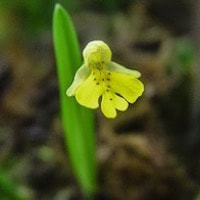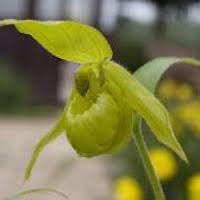Click for other Women's Woody 1, Woody 2, Woody 3, Woody 4, Woody 5, Woody 6, Woody 7, Woody 8, Woody 9, Woody 10, Woody 11, Woody 12
Contains Scented Notes of:
Oakmoss - Check details at Scentopia's scent library
Native Singaporean Orchid notes: Oncidium Sharry Baby
|
Oncidium Sharry Baby - Used in Woody 1 (Women) for Team building Perfume workshop
Oncidium Sharry Baby is a sympodial epiphyte orchid hybrid. It was registered in 1983 and created by Beall as a cross between Oncidium Jamie Sutton and Oncidium Honolulu The mouthwatering scent of vanilla and chocolate without the calories, makes this easy-to-grow orchid top the popularity charts. Another non-native on the list. But the smell will explain why we got tempted to keep it in stock. |
Therapeutic Orchid notes:
|
Amitostigma simplex
Chinese names: Huanghuawuzhu Lan (yellow flower no pillar orchid) It's found on grassy slopes above 2300–4400 m in western Sichuan and Southwestern Yunnan. Unfortunately, it is on the 2006 IUCN Red List of Threatened Species. This can be substituted by Amitostigma pinguicula as the usage is same |
|
Cephalanthera falcata Lindl.
Chinese names: Jin Lan (gold orchid), Lianyetourui Lan (pistal above sickle leaf orchid) Chinese medicinal name: Jin Lan (gold orchid) Herbal Usage: Herb is obtained from Hubei, Hunan, Guangdong, Guangxi, Yunnan and Sichuan. The entire plant is anti heat, and relieves fever. It is used to treat sore throat and toothache. |
|
Cypripedium henryi Rolfe
Chinese names: Luhuazhuo Lan (green flower spoon orchid); Chinese medicinal name: Longshejian (dragon tongue sword); Jinlongqi (gold dragon seven) Flowers appear in April and May and have the scent of spicy honey and attract a small black wasp, Lasioglossum sauterum. It is an elegant, endemic, terrestrial herb found in open scrub in the Chinese highlands. It thrives in damp humus-rich soil in fairly open places. Herbal Usage: Herb is collected from China’s southwest areas. Roots are used to improve qi and blood circulation, reduce swelling and pain, “cold in the stomach”, pain around the waist and thighs and pain resulting from injury. |
|
Geodorum densiflorum (Lam) Schltr.
Bangladeshi name: Kukurmuria (Garo tribe) Chinese name: Dibao Lan (precious ground orchid) Indian name: Kukurmuria in Orissa Flowering season is from April to May in Assam, West Bengal and the Andaman Islands. This terrestrial orchid is distributed in Sri Lanka, Myanmar, Thailand, Indochina, Malaysia, Indonesia, the Philippines, the Ryukyu Islands; and in Taiwan, Hainan, Guangdon Guangxi, Guizhou, Yunnan and Sichuan in China; also in Queensland (Australia) and Western Pacific. Herbal Usage: Poultice made from the pseudobulbs of is used as a disinfectant in Philippines. Root paste mixed with ghee and honey is used by a hill tribe of Orissa to correct menstrual disorders. Further south in Andra Pradesh, the Kondareddis of Khammam and the Chenchus of Kurnool apply a root paste for insect bites and wounds. In the Khammam district of the same state, Koyas feed the tubers of the orchid, pepper and garlic to cattle struck down with intermittent fever. It is fed to goats when the animals suffer from diarrhea. Crushed rootstocks are rubbed on cattle to kill flea s in Uttar Pradesh. |
|
Habenaria dentata (Sw.) Schltr.
Chinese names: Emaoyufeng Hua (feather jade phoenix flower), Baifeng Lan (white phoenix orchid), Dalucao (large heron grass), Yufeng Lan (jade phoenix), Dongpuyufeng Lan (Dongpu flaked teeth heron orchid); Dongfubaifeng Lan (Dongpu white phoenix/ white heron/phoenix orchid); Chipianlu Lan; Emaoyufenghua (goose-feather jade blossom) Chinese medicinal names: Shuangshenzi (two kidney son); Baihuacao (white flower herb); Tianaebaodan (swan carrying an egg); Yufenghuagen (jade-phoenix-flower root); Duiduishen (double ginseng) Taiwanese name: Bai Feng Lan (White phoenix orchid) Thai names: Naang Oua Noi, Nang ua noi It has a wide distribution that extends from the Ryukyu Islands of Japan to Taiwan and Hong Kong across southern in Fujian, Guangdong, Hong Kong, Guizhou and Yunnan to the Philippines, Indonesia, Indochina, Thailand, Myanmar, Nepal and Himalayan India. Plants for medicinal use are collected in autumn. Herbal Usage: CTM mentions that stems “benefit the lungs and kidneys” and are diuretic, anti-inflammatory and can detoxify. Stems are used to treat weak kidneys, impotence, stomach ache, orchitis, dysuria, swollen kidneys, carbuncles and coughs caused by tuberculosis. |
Other scent notes
Aroma from Amber, Mandioca, Cupuacu root, elemi, copal






